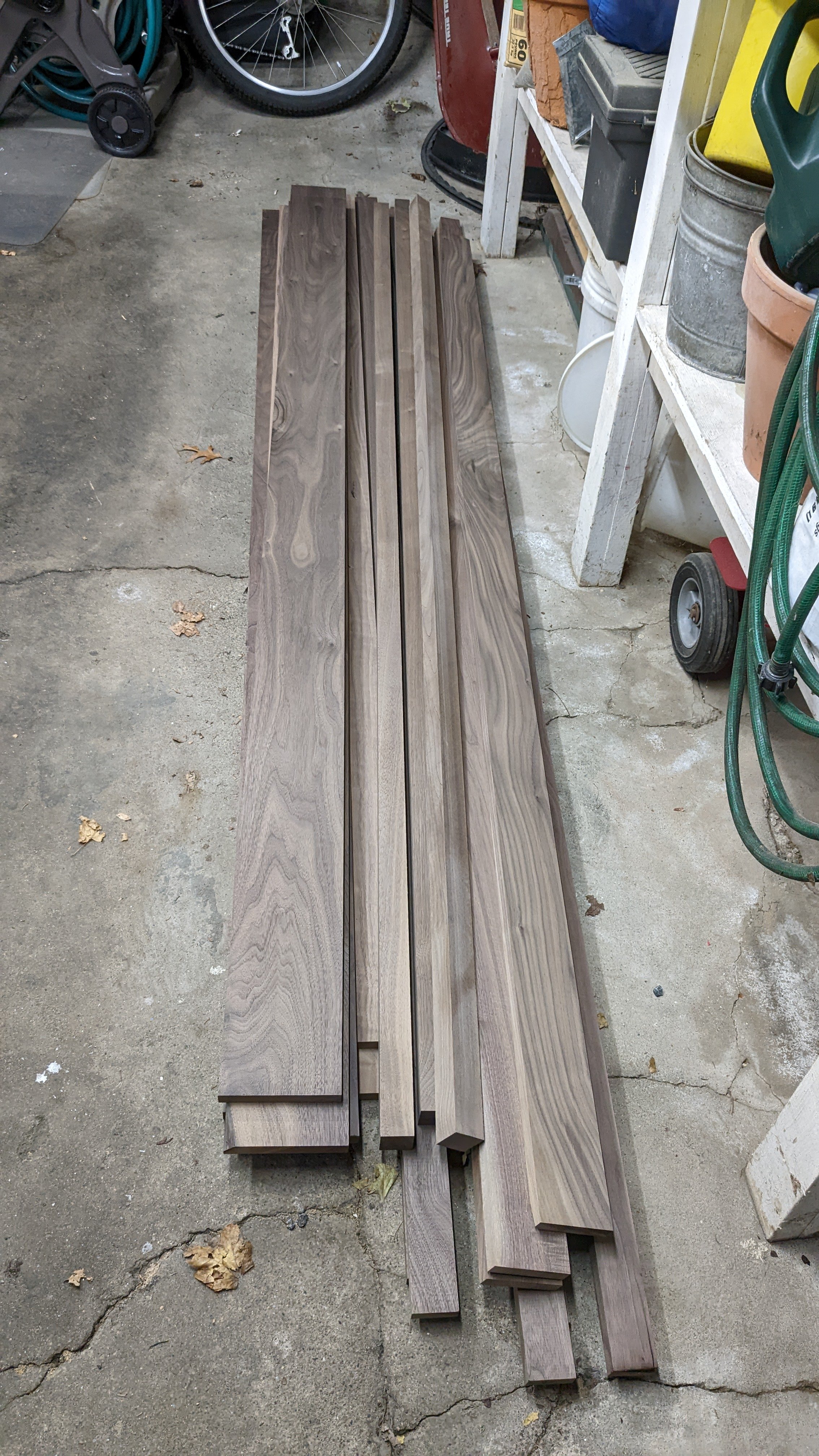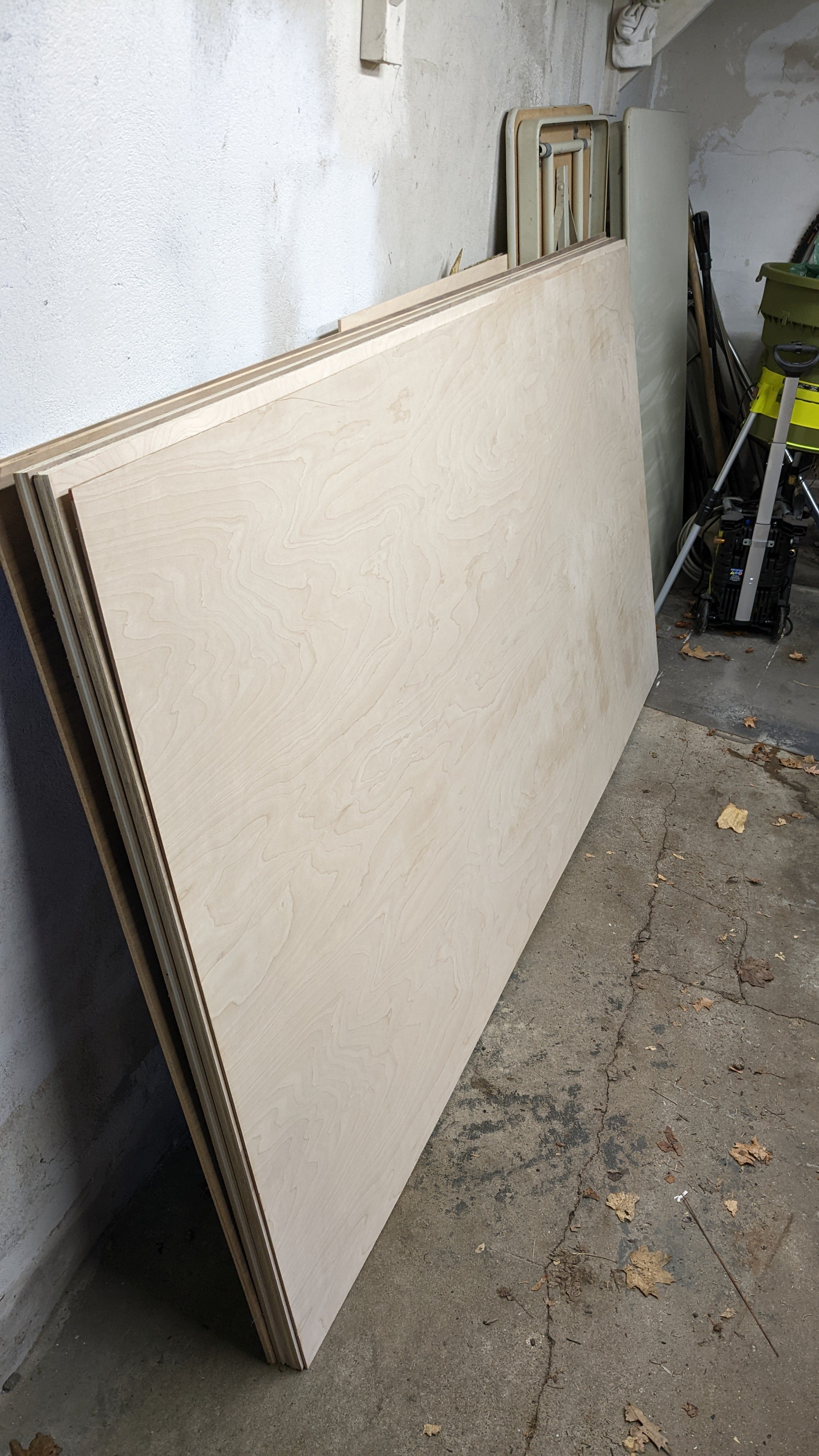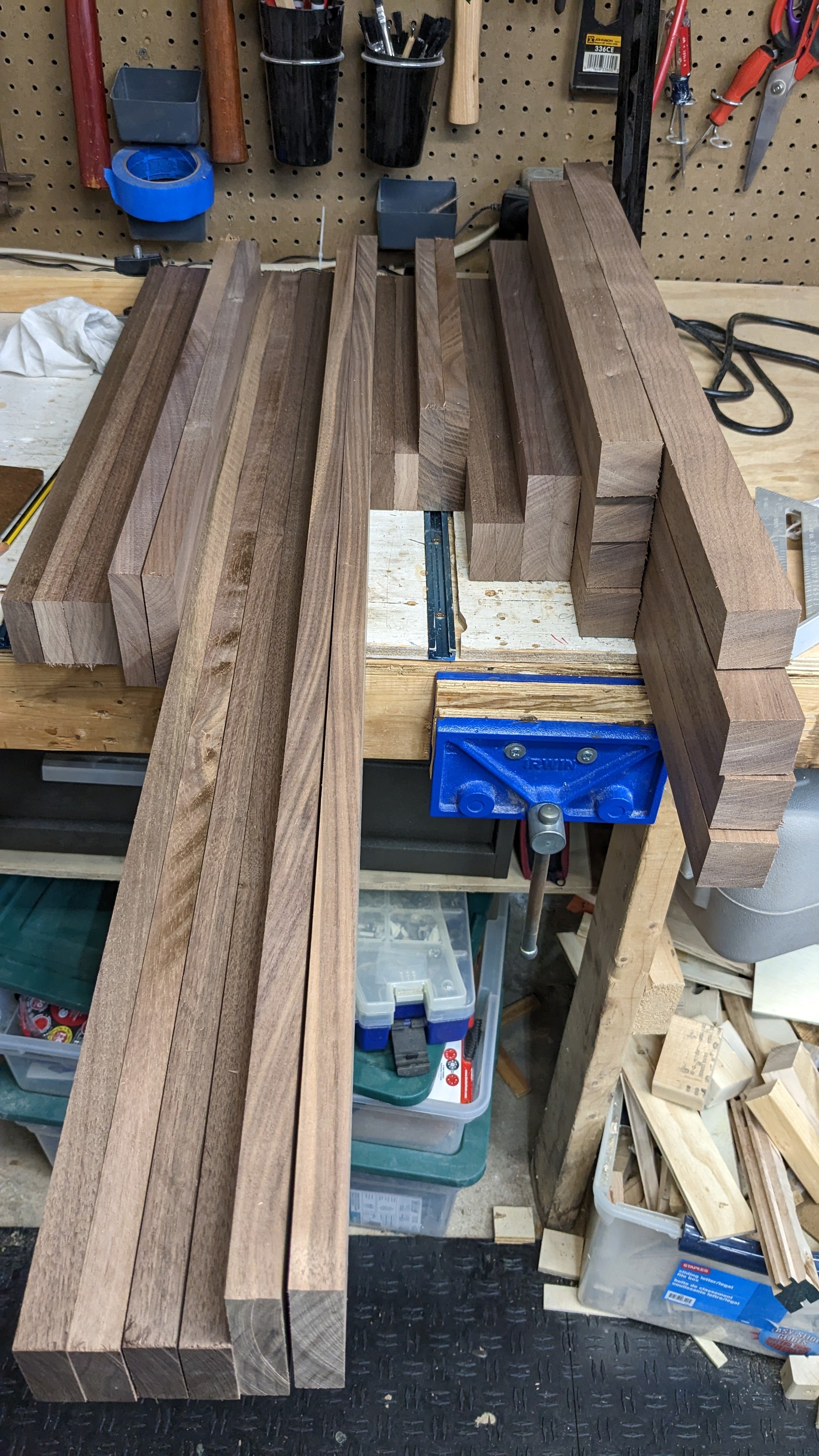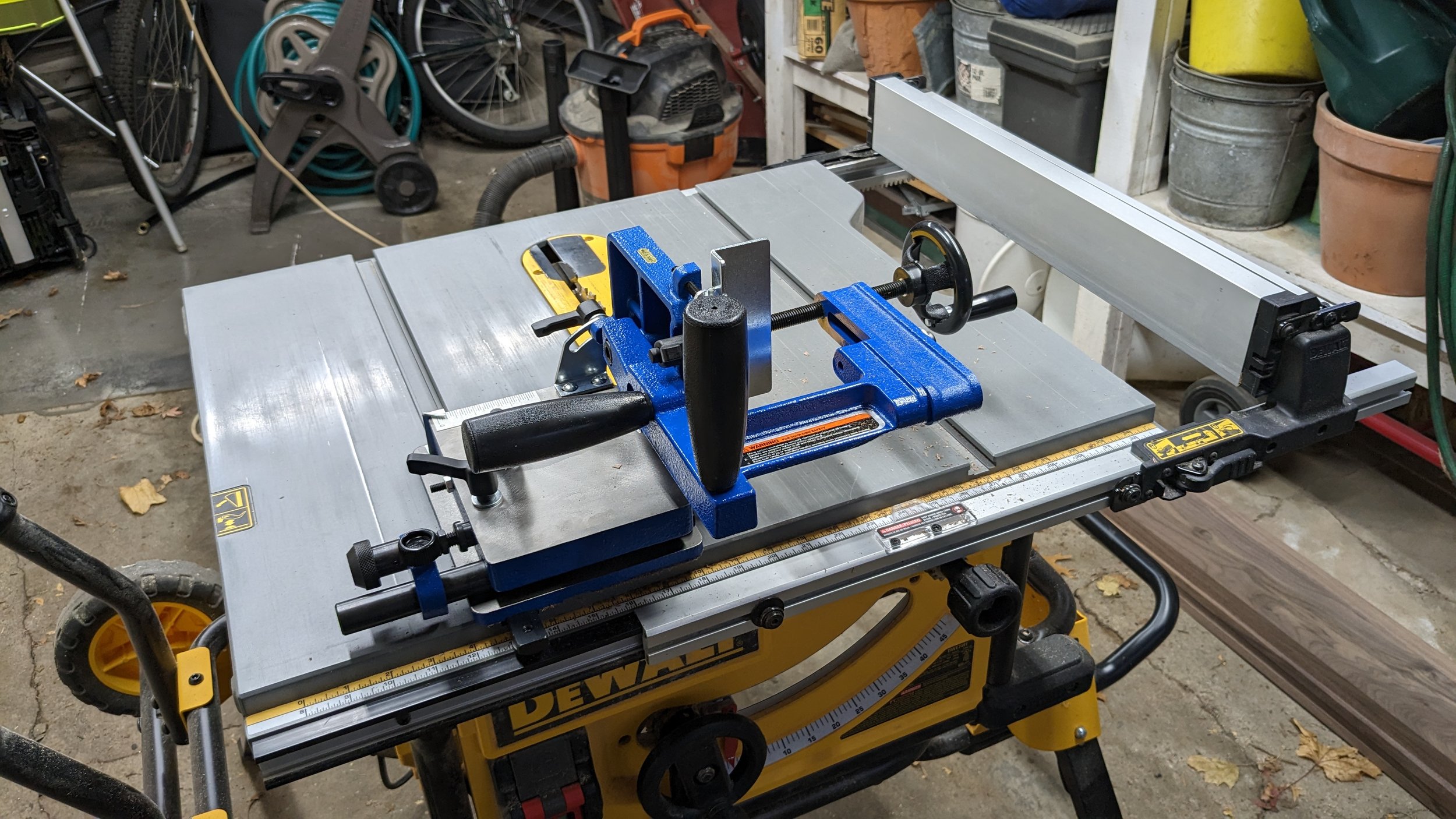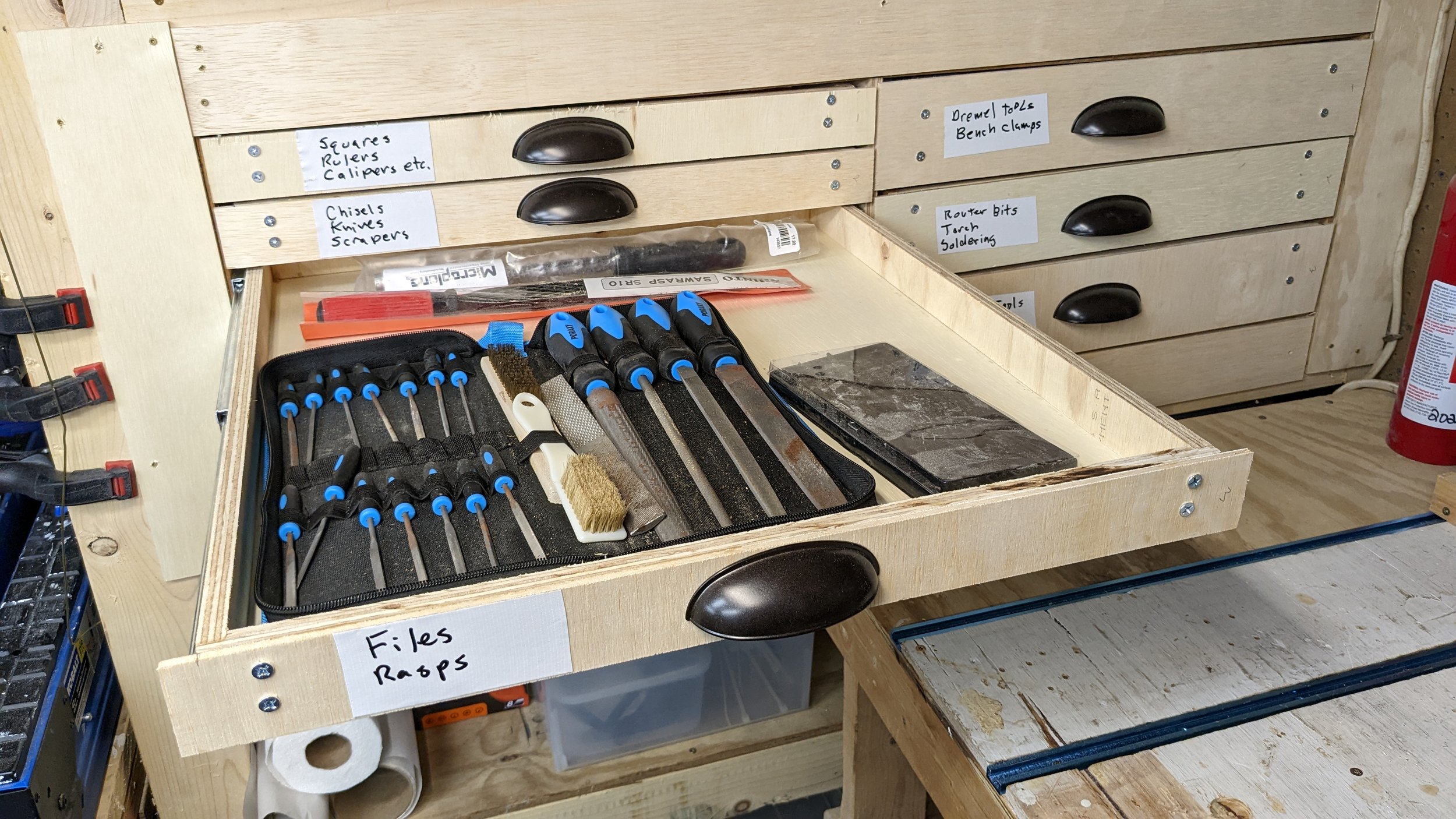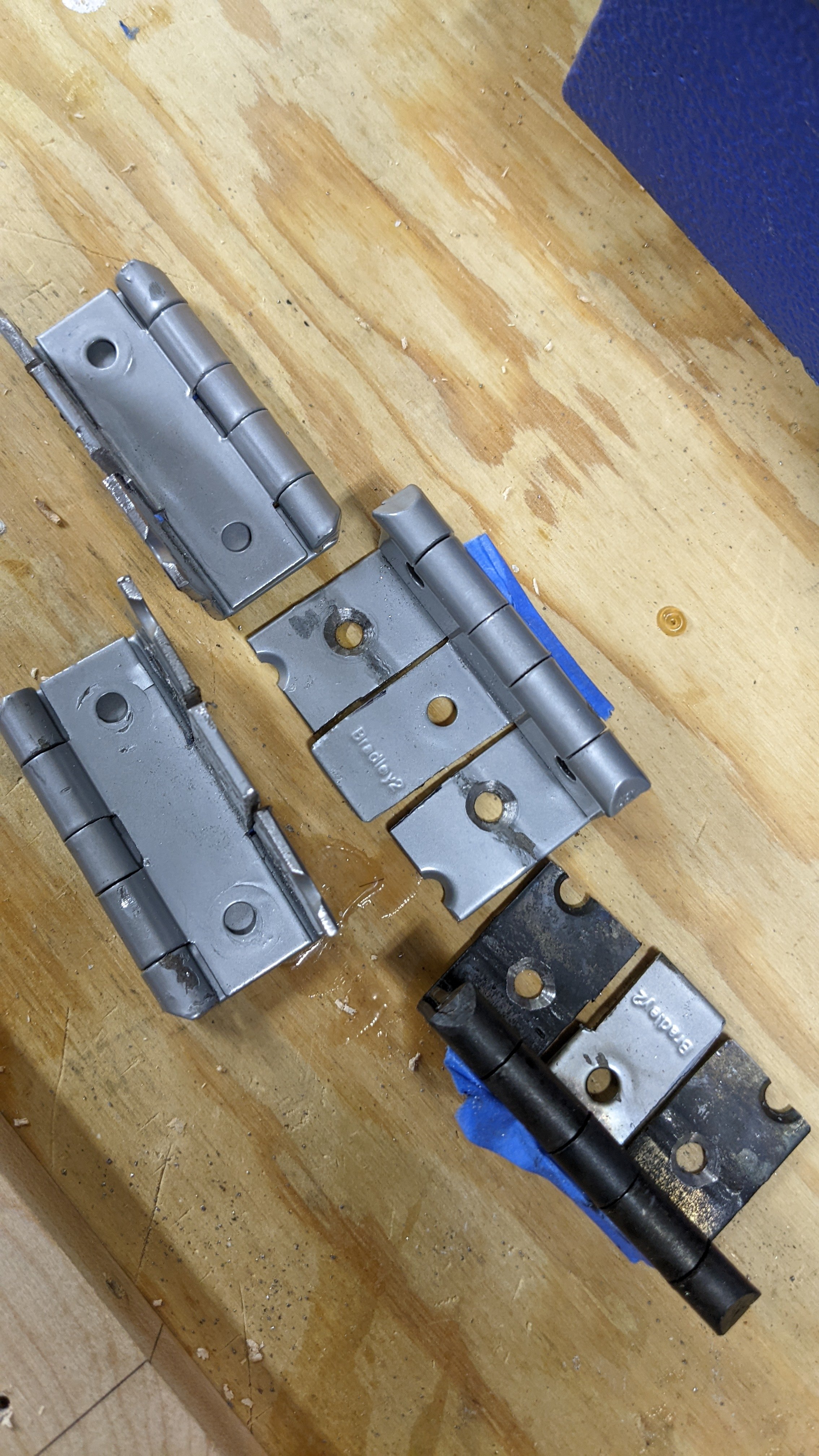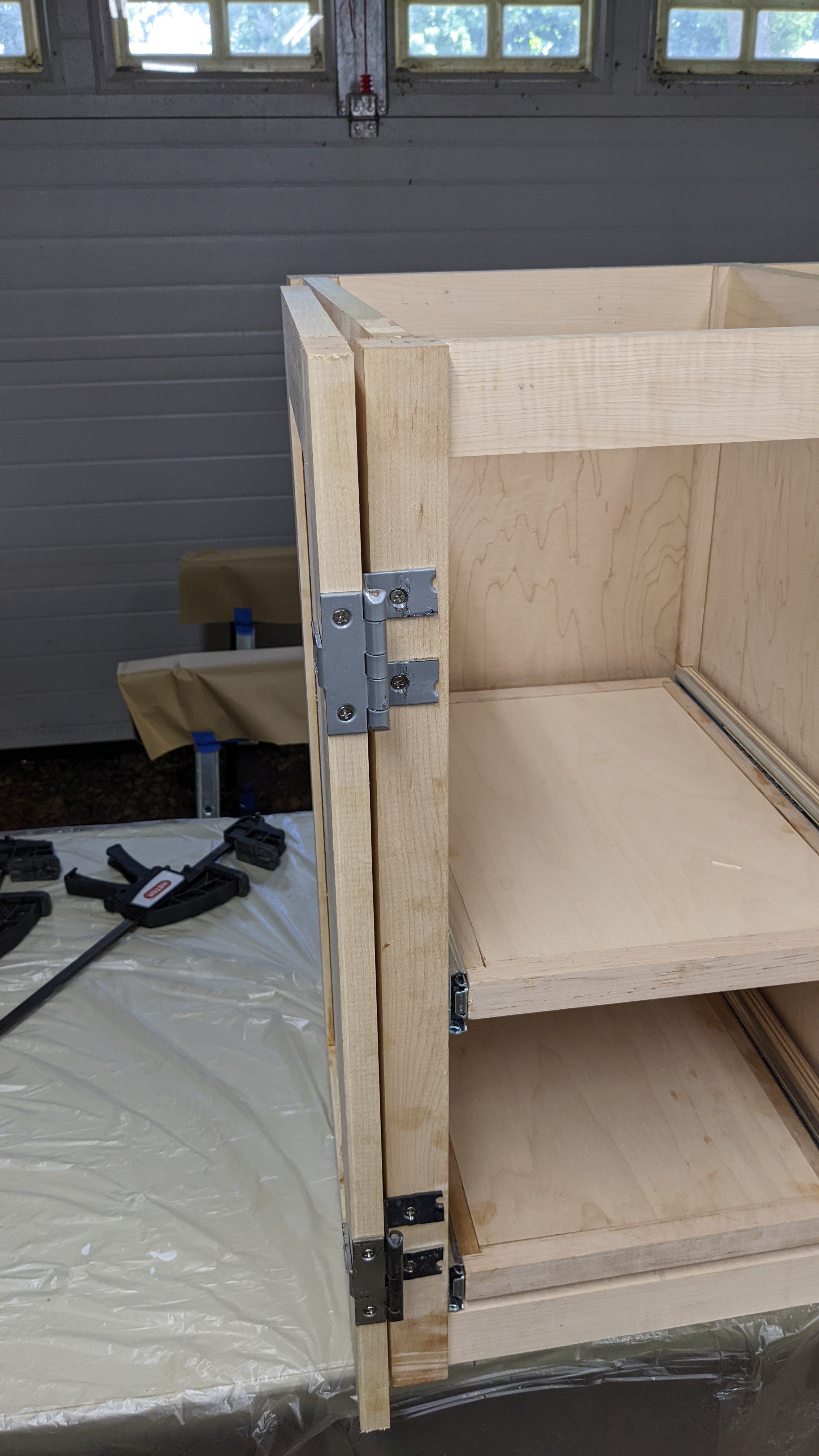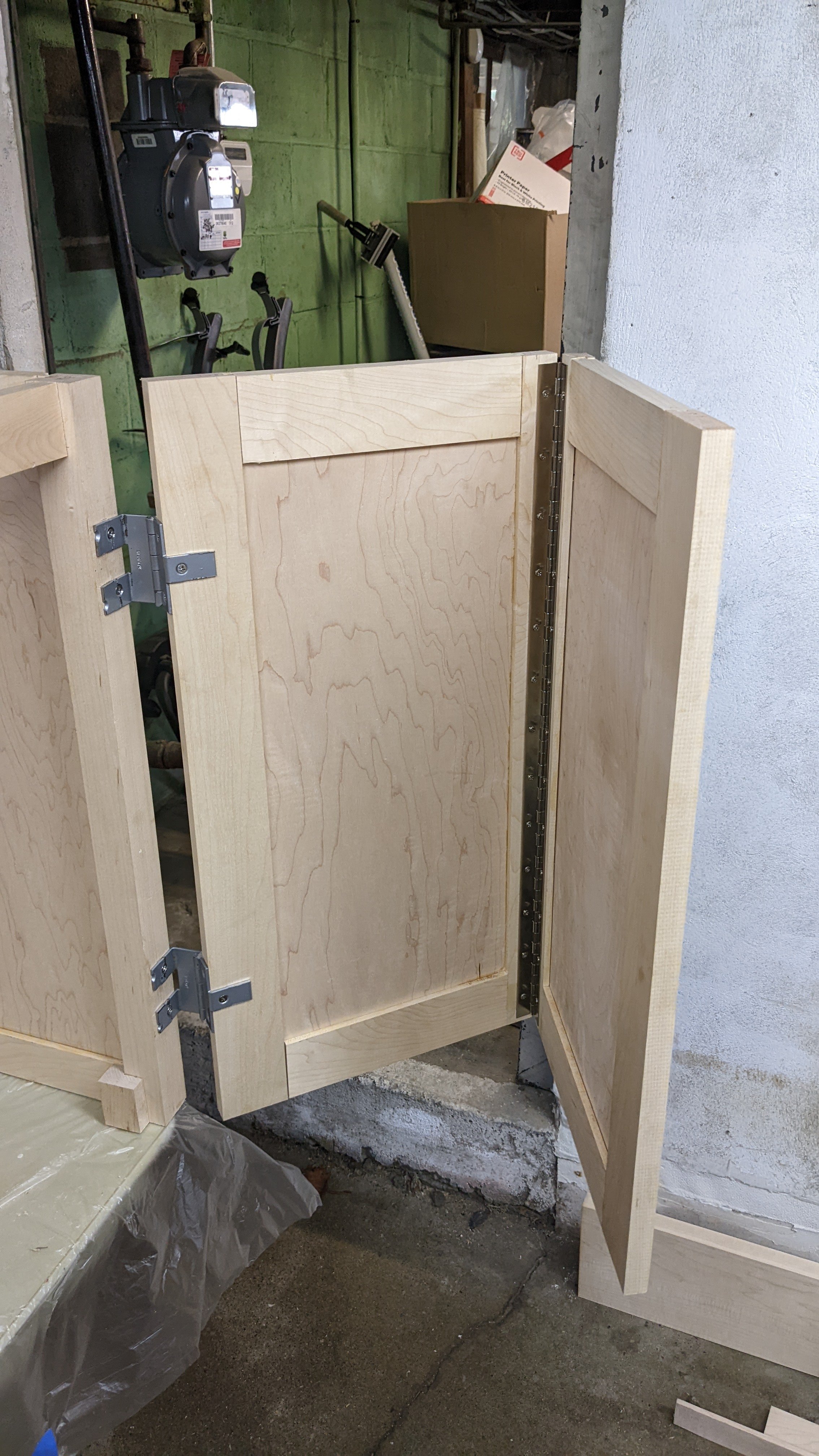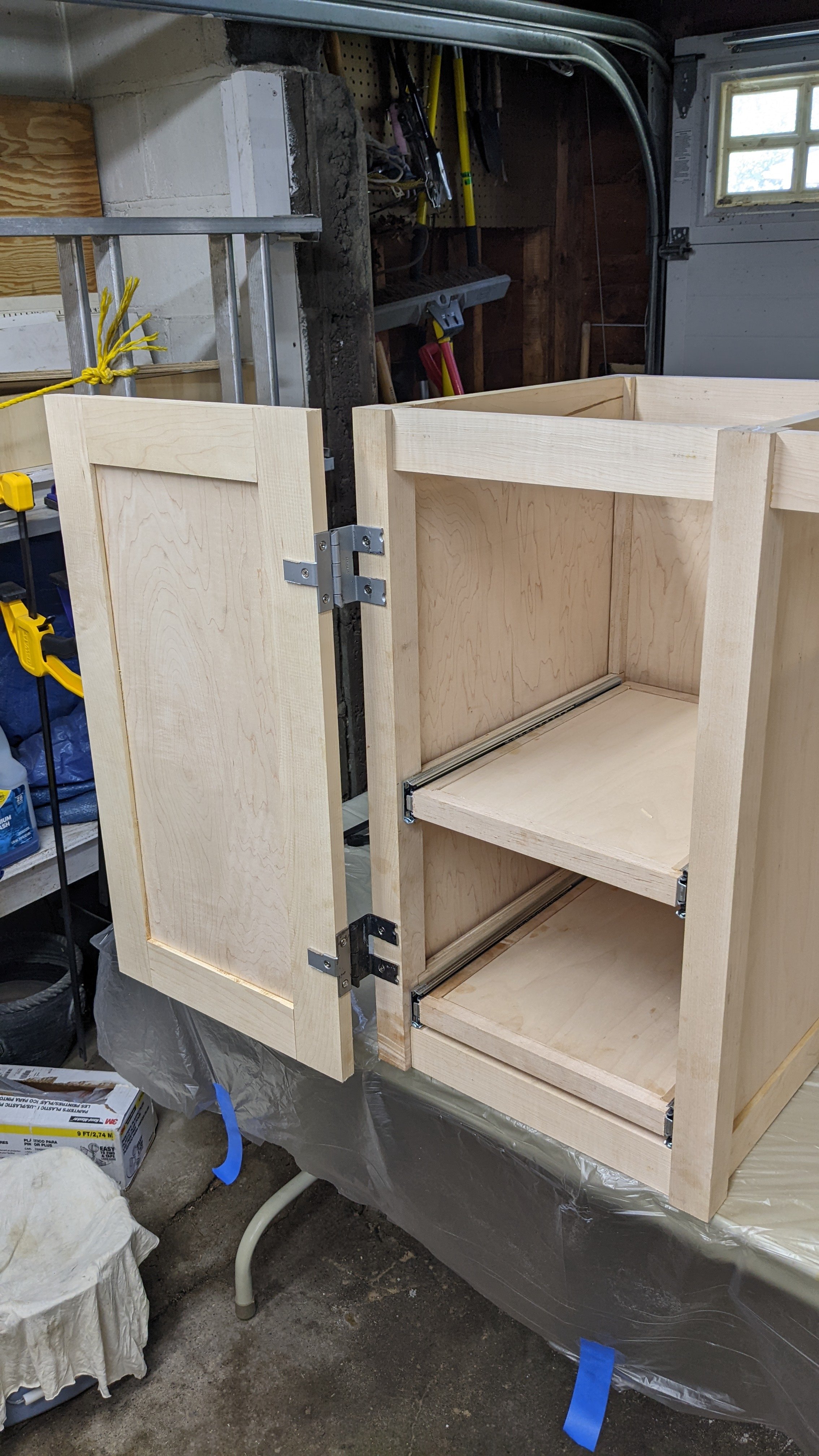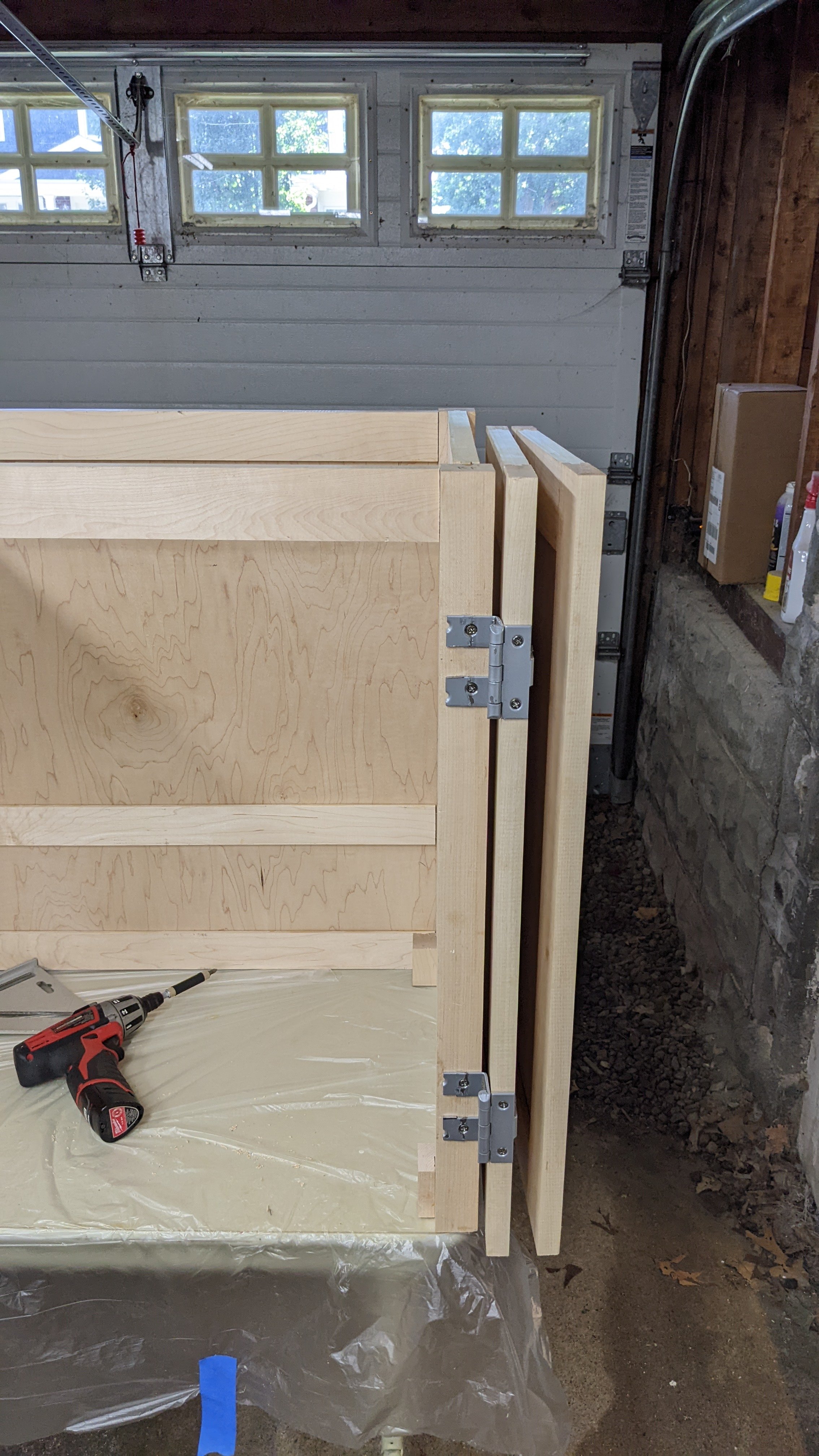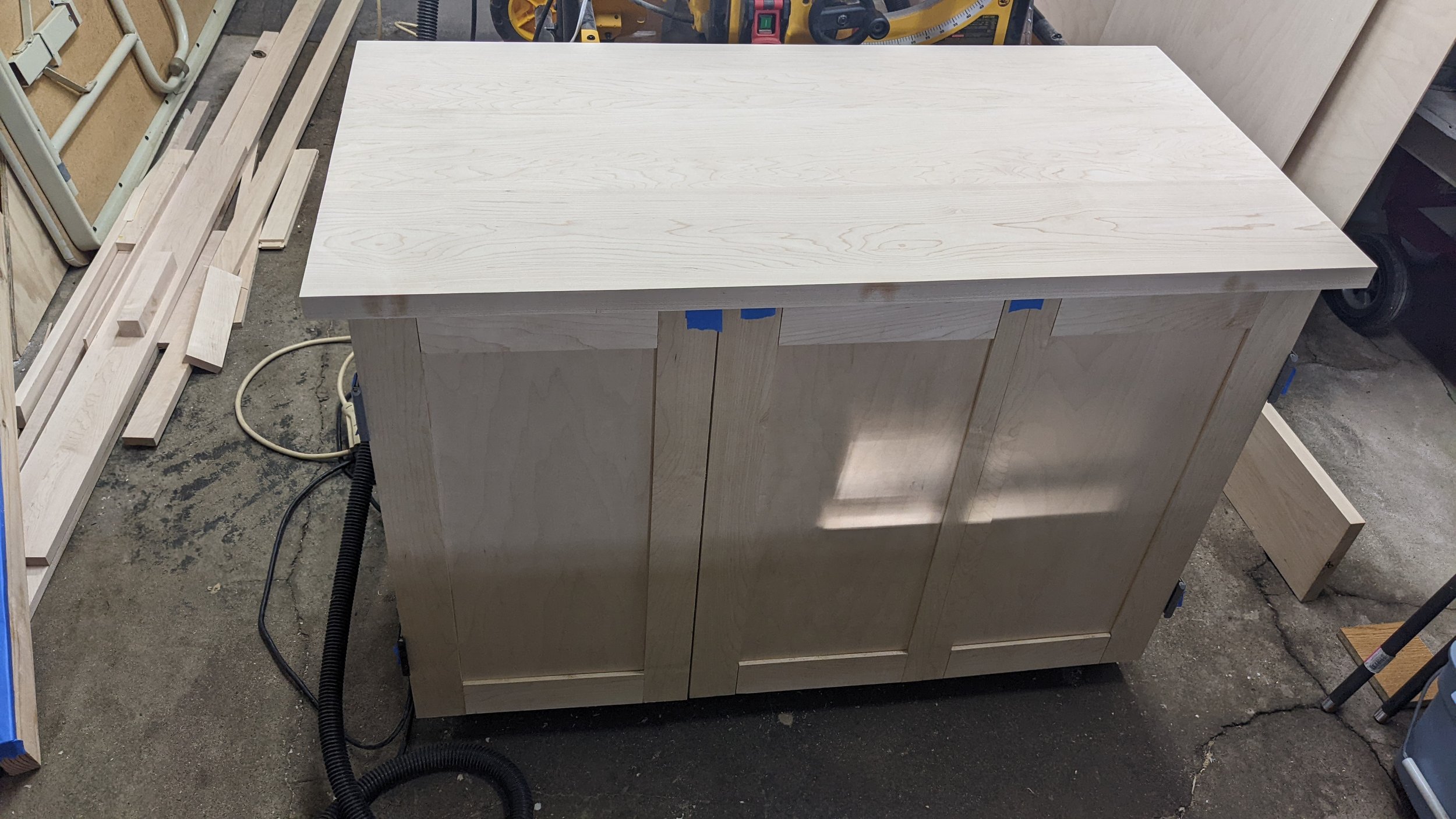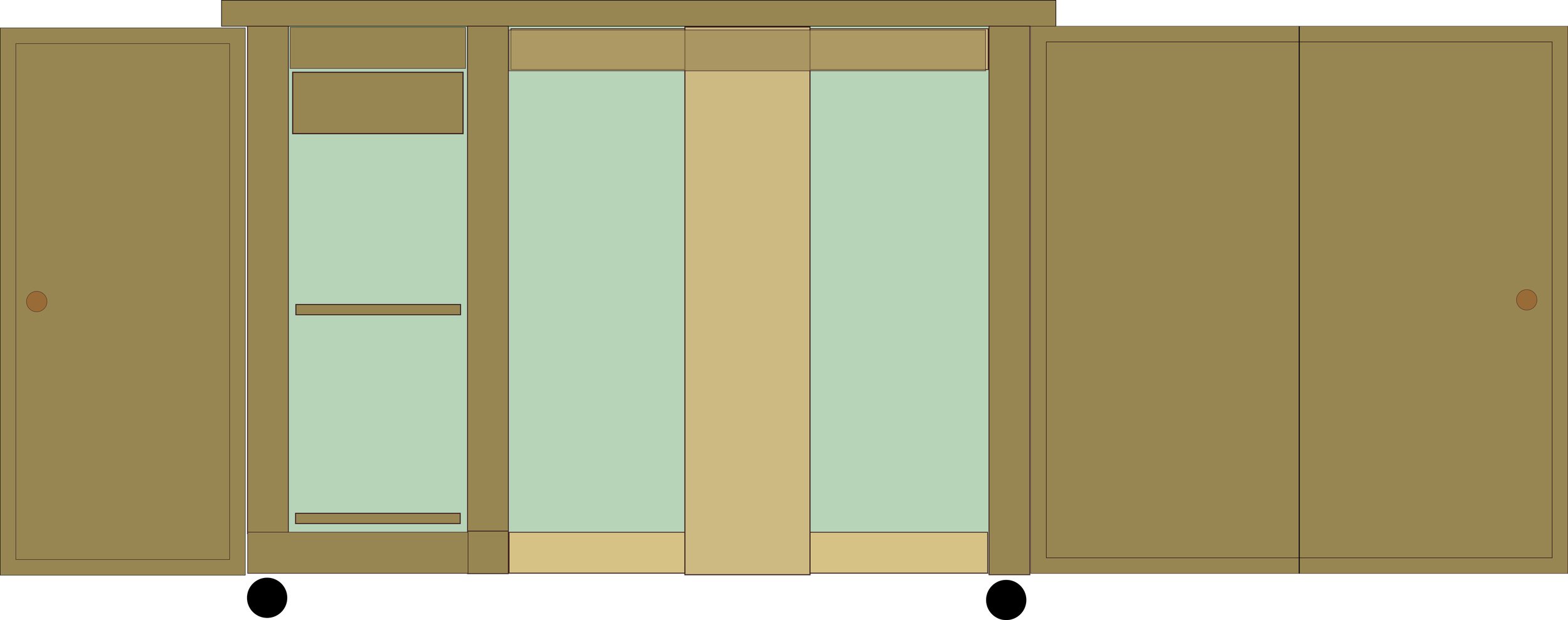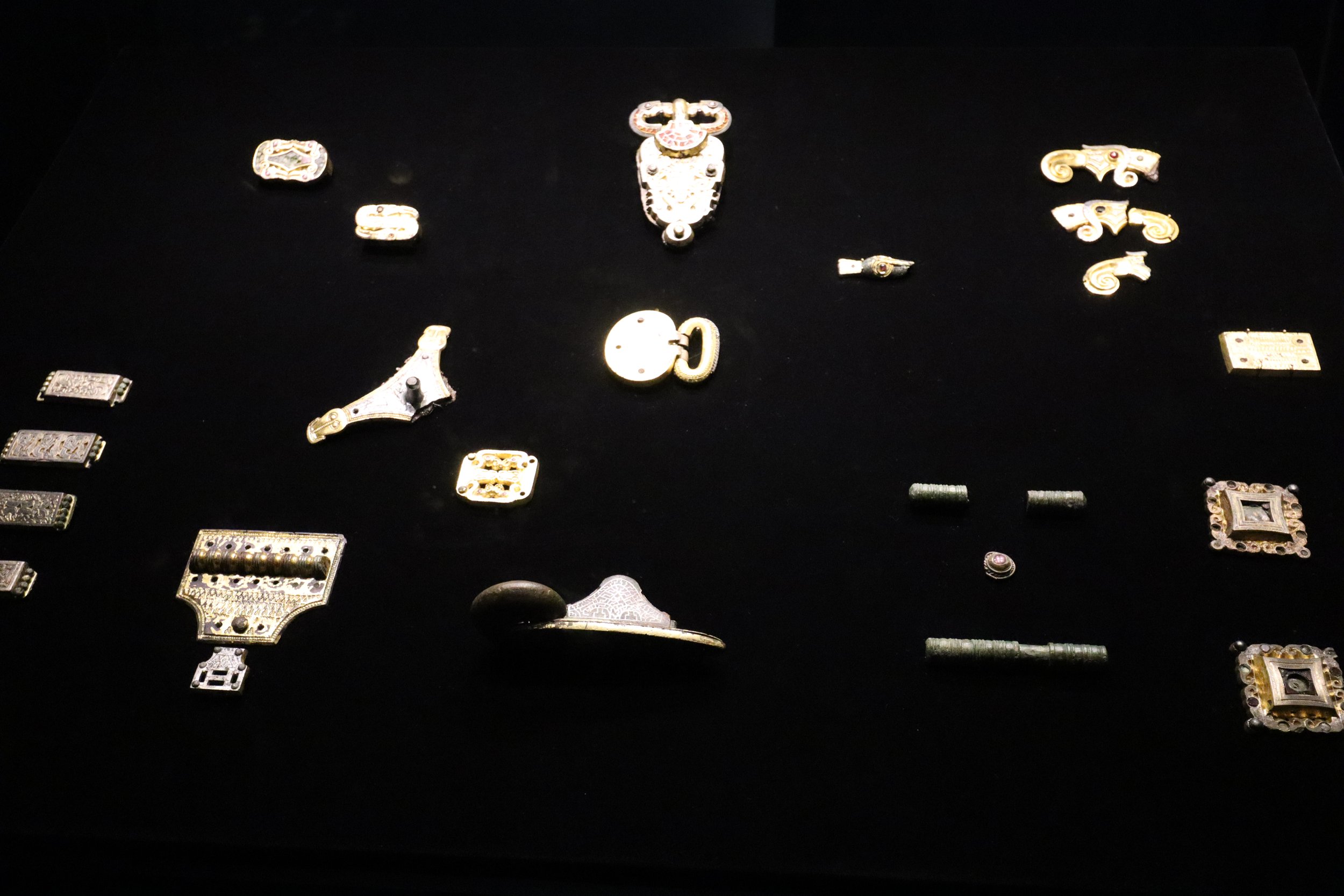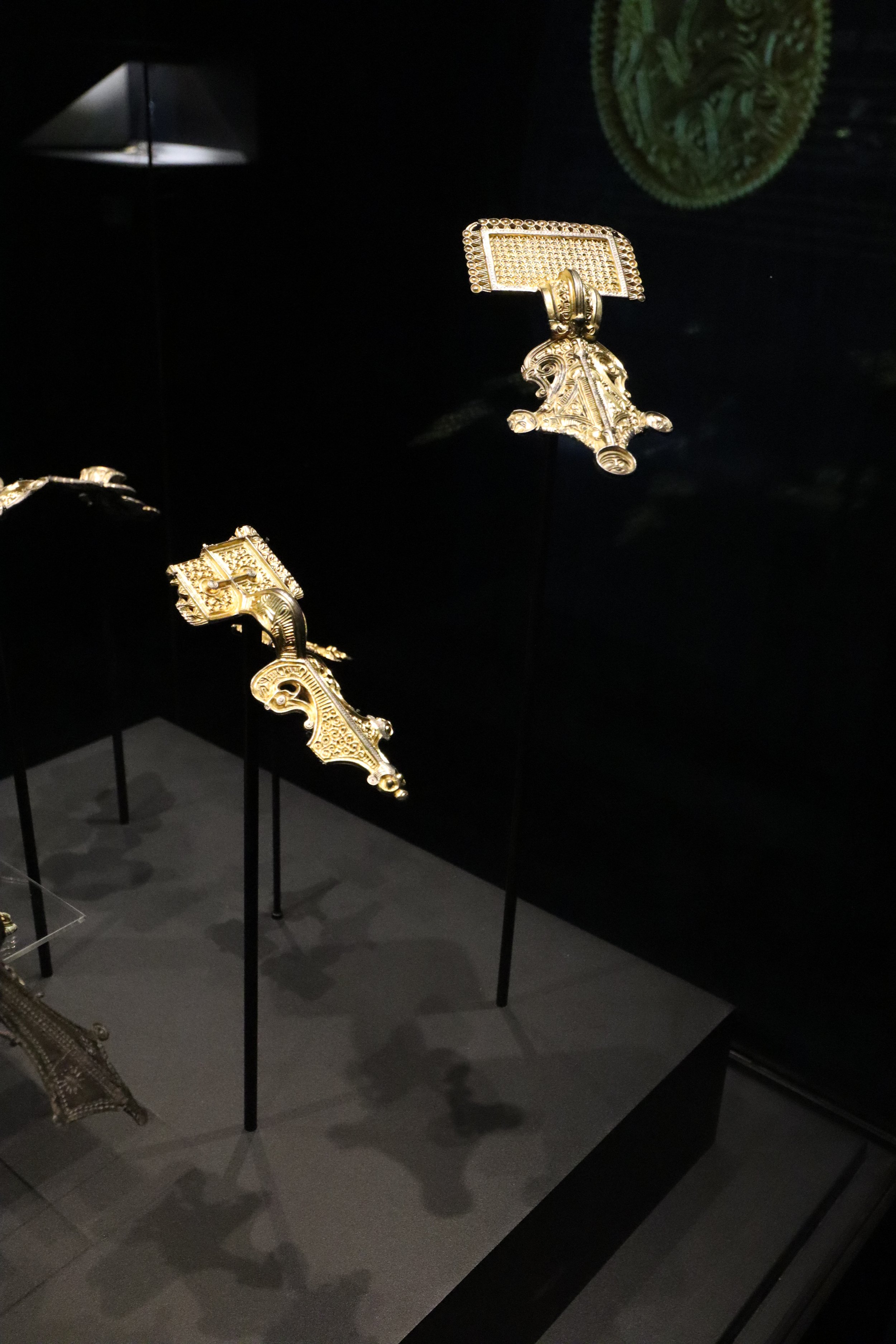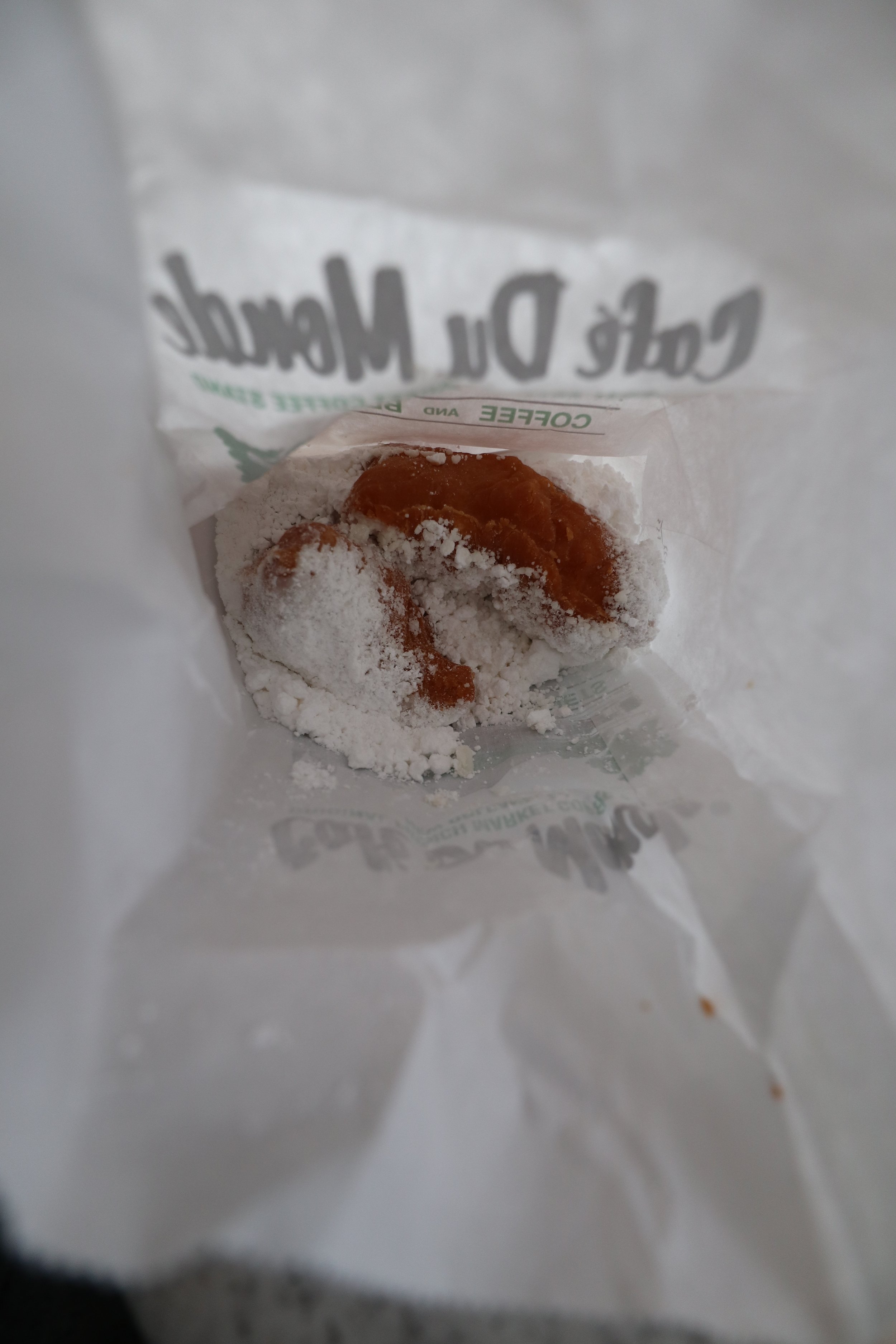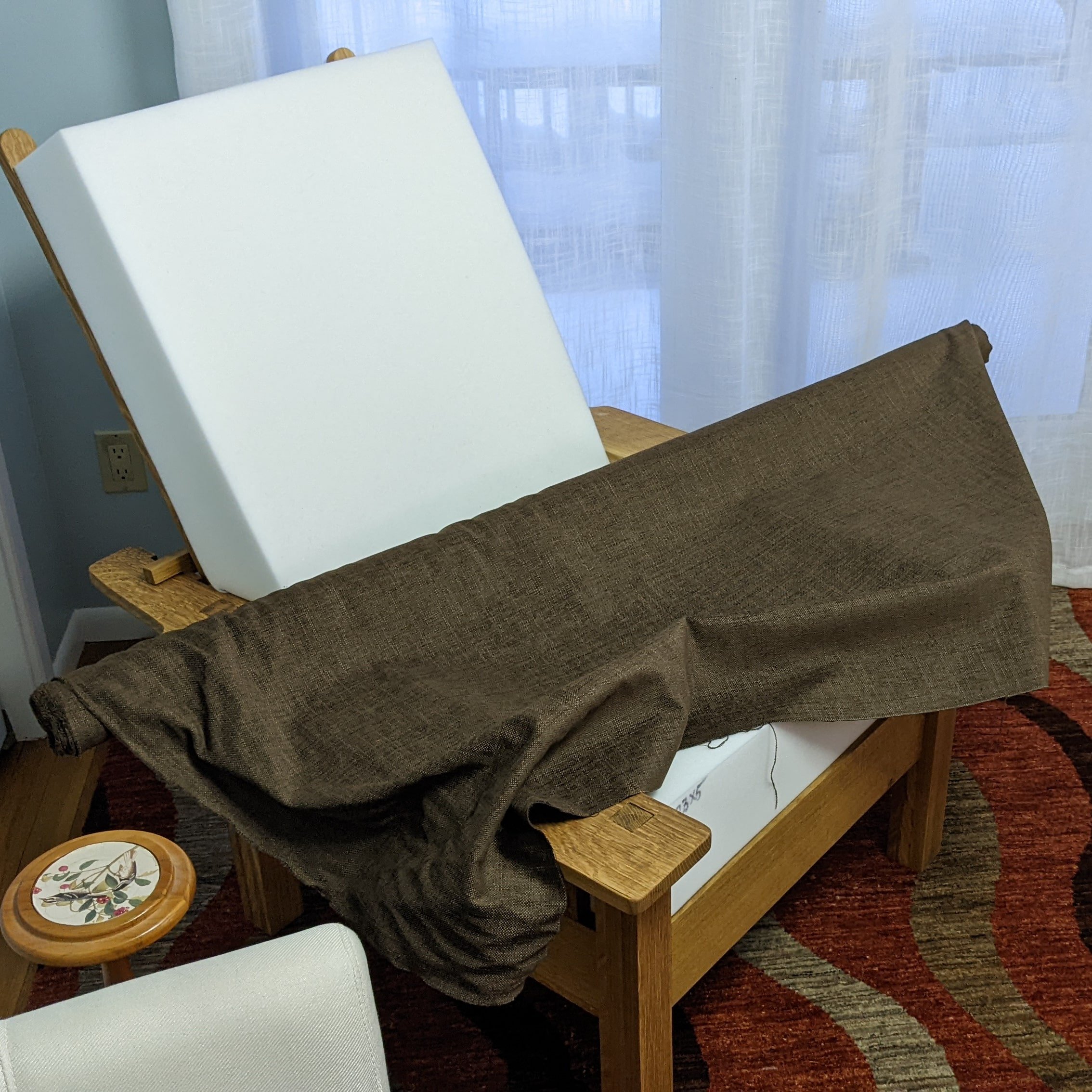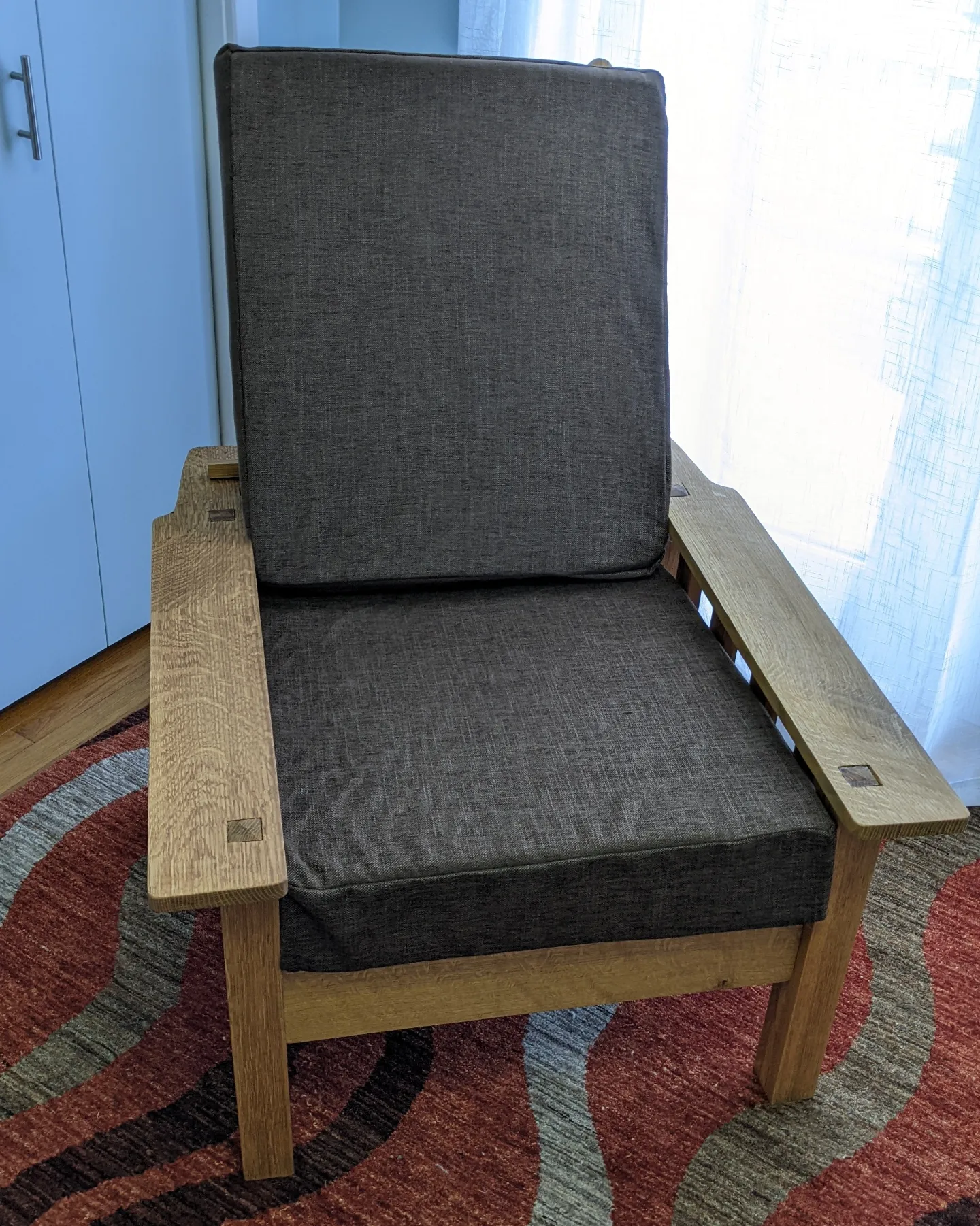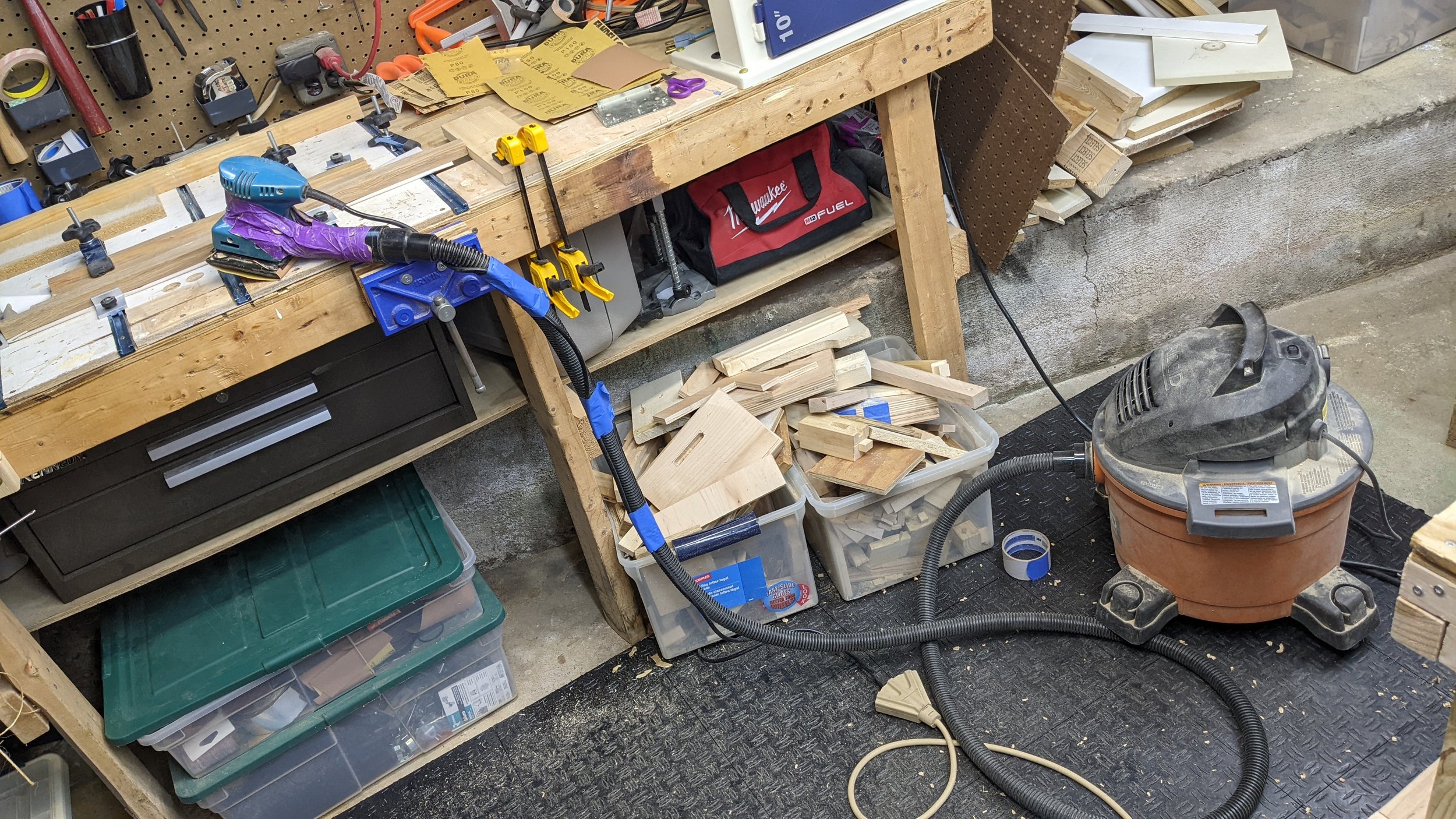This story came to me after hearing a news report about scientists using DNA as a mass storage medium for data. I thought “What if that DNA got into you somehow?” This is another story set in the world of Enjay. If you haven’t read any of the other stories, Enjay (New Jersey) is the name of a mining planet and The Hole is the nickname for the subterranean city of Paramus. The Company is the giant space conglomerate that founded Enjay and then divested it when it wasn’t profitable enough. You can find all the stories here: https://www.jlgoodwin.com/words-pictures/tag/NJ
Callum Shaw rolled his wheeled luggage off the space freighter into the hangar bay on Enjay, emerging from the cramped confines of the freighter into the vast vaulted space made him feel like he had suddenly shrunk. The enormous volume of the room made him gape and swivel his head around as he walked. He suddenly felt a hand grab him roughly by the shoulder and pull him to the left. A loading robot screamed past directly through the space he had been occupying. He turned a bloodless face towards the person who had grabbed him. It was one of the grizzled mining engineers he’d just spent several months with on the ship. Before he could gush his gratitude the engineer yelled over the industrial noise: “Stay inside the fucking yellow lines or you’re going to die before you get to the security desk!” With that he stepped past Callum and down the dirty yellow bordered path that the new arrival hadn’t even perceived until now. Callum swallowed his stomach back to its normal place and then followed the path like he was walking a tightrope over a gorge until he finally reached the emigration hall. It was a comforting human scale room that he was alone in except for a terminal. He stood in front of the terminal for a good five minutes before realizing that it was an ancient one that wouldn’t just remotely scan his DNA and he finally inserted his identity card. He answered the questions on the screen. When he finished, an armored door past the terminal opened and he went through.
A man in a blue coverall that said “Deputy” and “J. Dermody'' on the front stepped towards him and said “Hello Mr. Shaw, I’m Deputy John Dermody and I’ve got some additional questions for you.” Callum looked surprised, but said, “Sure, what do you need to know Deputy?” The deputy took hold of his bag, and said “We can talk on our way to your quarters, I don’t want to hold you up.” He led the way towards a large bank of elevators. He said “So you’ve got a place on level forty five?” Shaw nodded, wondering why the Deputy was so well informed about him. Dermody pressed the down button on the elevator bank and in a moment an elevator arrived. It was about half full of a mix of people, some were obviously miners given their atmosphere suits, tool belts, and such. Others were strangely attired and covered in tattoos, perhaps gang members. The rest were dressed like Callum, in business attire. Everyone ignored everyone else on the elevator. Dermody turned to Callum and said “It’s a little odd for someone with your background to come to Enjay without a specific return date registered...” So that was the problem, Callum thought. He said “The project I’m here to work on is a bit open ended, if things go well I could be here for a few years, if they go badly I could be gone in a few months. We just don’t know, but you’ll understand that the company wants to keep the project confidential in any case.”
The elevator reached the forty fifth level and the doors opened on what looked like a woodland meadow. As they exited the elevator they could see that they were in a clearing in the woods with paths going outward in five directions. A clear blue sky with a yellow sun arched above the clearing. Dermody turned to him and said “Costs a pretty penny to live in a VR level like this...” Callum looked around and marveled, he’d seen VR before, but never in a residence, only in games or special entertainment venues. The deputy led the way down the path to the left. As they went along they saw additional clearings off to either side, each one with a small cottage at the end. Eventually they turned into one and Dermody turned to Callum and said “You need to open the door, it’ll be keyed to you...” Callum stepped up and turned the door handle and the door opened easily and they entered the cottage. The inside of the cottage was designed to look like a country cottage, but it was clear that its dimensions and layout didn’t match the outside of the cottage. The cottage outside had a smaller footprint and was on two levels, the interior was all one level and larger.
Dermody turned towards him and said “I get it that the project is confidential, but you also have a strange background for coming here. You’re not a geologist, chemist, physicist, or mining engineer. You’re a molecular biologist with a concentration in genomics, your latest paper was about storing high volumes of data in DNA strands and then being able to retrieve it efficiently. So, that raised some questions as well...” Callum was amazed that these backwater sheriff’s deputies had such complete information, his paper wasn’t released yet when he’d departed from the inner planets. He said “There are some unique indigenous fungus-like creatures that have been found here on Enjay. They are really incredible creatures, I’ve been studying them remotely, I honestly have been spending my every waking moment since I started my post doc project on them analyzing every scrap of data I could find on them, and I designed a bunch of the equipment that the team here has been using, and now I get to actually see them in person, I’ve never been off-world before, but I’ve read a whole lot about it, but it’s really different than I thought, but I don’t care I just want to see them…” Callum’s explosion of words sputtered to a halt as he realized that he was babbling at a cop. Dermody tilted his head and looked at Shaw and said “So you’re going to study our native mushrooms, be careful, their spores are nasty and if you come in contact with one you’ll basically have to spend the rest of your life here. There’s no known way to get them out once they’re in, and it takes a good fifteen years for the polyps to kill you assuming you don’t do the job yourself.” Callum shrugged, “I’m well aware, I designed all the protocols for handling them in the lab.” Dermody gave him a skeptical look and wheeled his bag into the bedroom of the quarters and then headed towards the exit. He turned and said, “Thanks for talking with me Mr. Shaw.” Shaw said “Not a problem, call me Callum by the way.” Dermody smiled, “You can call me Deputy. Callum.” and he left, closing the door behind him.
The next day Callum woke up and after figuring out the food generator was made to look like an ancient cast iron stove, he ate breakfast, bathed and got dressed. He asked the computer (made to look like a wall mirror) where the company lab was and was informed it was down on level ninety eight in the industrial sector. He grabbed his lab coat and his backpack and made a mental note to figure out how to turn off the excessive VR inside his room. What an incredible waste of money he thought. He left his cottage, and walked through the forest now adjusted to be a forest someplace at 8:00am in the morning and he figured out the knot to press on the tree to summon the elevator. Soon he was deposited on the ninety eight level which was definitely not VR, it was dingy, walls made of some kind of sprayed plastic on a frame, and there was a metal desk opposite the elevators where a woman sat. She looked up from the computer screen and said “Shaw?” Shaw nodded, handing her his company id, she scanned it out of habit, and handed it back to him. “You’re in lab five, through those doors on the right, all the way to the end.” She looked back down at her computer and he went through the doors she’d indicated.
As he entered the lab he recognized all of the familiar equipment, he had specified it after all. Along the far wall were glass containment units, each unit contained one test fungus. He’d never seen them in person, and he was drawn across the room towards them. They were amorphous and yet filled with shifting patterns, the colors were all black, gray, brown, rust and sometimes red. Sometimes tendrils would form, then a globe at the end, coursing with colors and then it would burst. The spoors clattered against the glass, this was one of the many strange things about these creatures. Their spores were like darts of glass, if you were near them unprotected they would penetrate your skin and begin reacting with your DNA instantly. Mostly it found ways to reproduce more fungus, but along the way the mutations would warp the host’s body in horrible ways. But nothing they had found could sequence and edit DNA at the incredible pace that these creatures could, locked inside them was a way to read and write DNA as fast as any electronic random access memory. He found them beautiful and fascinating and it would take years to understand how they did what they did. He noticed that someone had pasted labels on each containment unit each with a name, Ellen, Deirdre, Jane, Bessie… like naming a herd of cows.
“Just like you specified...” a woman’s voice said from behind him, making him jump involuntarily. He turned to see a slender woman with short brown hair looking at him with curiosity and amusement. It was Dr. Chase or Molly, one of the local researchers he’d been corresponding with on the project for over a year. “Molly!” he exclaimed “So cool to meet you in person finally!’ he opened his arms stepping forward for a hug, she offered her hand. He shook her hand and said “They’re beautiful, thank you for collecting them for me.” She shrugged “Well us geologists have to clear them out anyway to get any work done without worrying about getting stung through a weak area in our suit. Usually we just burn them out, so this was a little trickier, but the company said to do it, so we did it...” He pointed at one of the name tags “Did you name them?” Molly laughed and said “Yes, I’ve had to get them the mineral slurry that they feed on so I got to know them and it just seemed like the right thing to do.” She turned towards the containment boxes and said “I can show you the safety procedures for handling them and feeding them.” She stroked the glass on one of the boxes and the blob inside shifted colors and patterns and flowed over the glass roughly matching the pattern of her hand. Callum was startled to see this kind of response from a fungus. He was thinking and apparently said aloud “Why would a fungus that lives in the dark and eats mineral slurry respond to your hand that way?” Molly drew her hand back and looked at him seriously “Why indeed?”
Callum spent the day reading the records about each of the specimens and as mid-day came around an older man in a lab coat came into the lab and approached him. He was short and somewhat round and had a florid face and gray hair, as Callum stood up to greet him he enveloped the young man in a slightly longer than necessary hug. He shouted, “Fucking awesome that you’re here Callum! We’re going to do such incredible shit together!” Callum disentangled himself from the hug, noting that he now smelled faintly of beer and cigarettes. “I can’t thank you enough Dr. Flynn for helping me get funding to come here!” Callum beamed. Flynn waved his hand, “Call me Bill kid, and it was all completely self serving, I’m fucking overwhelmed and you’re one of the few people in the universe qualified to help me.” He gestured to the specimens, “What do you think of my beauties?” Callum paused and said “They were already the most fascinating exo-creatures I’ve studied, but now being here with them I realize that they have an incredible presence, almost a personality. I know that’s ridiculous, but it’s my first impression… Also, I don’t understand many of their adaptations in the context of Enjay…” Flynn smiled and said “Ah, that’s because you’re assuming that Enjay has always been like this, it was quite different before its moon was struck by a giant asteroid and driven into Enjay. These creatures are actually some of the only survivors of what was once a very populous ecosystem.” Callum had been so absorbed by reading the biological and genetic data about the fungus that he hadn’t read the geology or astrophysics reports. 'Ah, well that makes sense, so they’ve somehow adapted to the new environment and a lot of these behaviors are just vestigial from their prior environment!’ Flynn nodded, and said “But it’s lucky for us they survived, for whatever reason these critters can unzip and decode and re-encode DNA faster than anything we know of, on the order of nano-seconds to read and write DNA makes it like any of our most advanced storage devices except at a vast capacity and redundancy increase.” He paused, “Of course they do it for themselves or whatever they get out of it, but it’s our job to understand the mechanism if we’re going to harness it.”
At the end of the day, Callum’s head was so full of information that he left the lab in a haze and found himself back at his living quarters without quite knowing how he’d navigated there. He went in and noticed that the communicator was flashing near the entryway and there was a message. He played the message, Deputy Dermody’s voice said “Hey Callum, I was thinking that I was sort of unwelcoming when we first spoke, all business like, and I just want you to know it was just our procedure here for surprising folks that turn up. In any case, if you’d like some pointers on how to get around in the hole, you could meet me for a drink up at Peggy’s on level twelve, it’s a decent bar that isn’t a bucket of blood every night. I’ll be there around 7pm. Cheers!” It was about 6:45pm, and Callum suddenly felt he could really use a drink. He put on a civilian jacket and headed back to the elevators. On the twelfth level he followed the signs painted on the corridor walls to Peggy’s. The room was filled with people drinking and talking at tables and standing at various bars. He looked around and finally saw Deputy Dermody at a table along the far wall, he waved and beckoned him over.
Dermody stood as he approached and put out his hand. Callum took it and said, “Thanks for the invite Deputy”, Dermody shrugged, “In these clothes I’m John.” and smiled gesturing for Callum to sit down. A waitress came over almost immediately and took his order. John said “So, first tip, do your drinking on level twelve, it’ll help keep your vitals inside you. Avoid most stuff above the ninth, mostly gang run and unless you’re more into violence than I think you are there’s nothing there that you’ll miss.” He paused to drink his beer, “The fancy stuff is considerably further down on level one twenty five, some great restaurants and theaters down there. I hope they pay you a lot though, they’re not cheap on this rock. There is a nice park that’s free down on level one thirty, always a good place to go to get the feel of an open space even if it isn’t really. Of course if you want to see space you can always book an excursion to the surface, but you might have to go there for work anyway and with the radiation, you should limit your monthly exposure.” Callum sipped his drink, it wasn’t bad, and asked “Do you know Molly or Bill that I work with at the lab?” John said “Oh yeah, I know them both, Molly a bit better, she’s from level twenty-two, her dad was a mining geologist. I went to school with her for a while before I decided to be a Deputy. She’s a good kid, I see her at parties and such when school friends get together.”
He gestured for another round, “Bill Flynn has been here about five years, he came when they first figured out that the mushrooms were more than just a nuisance to mining. I don’t see him out that much, but he does like to drink on Friday’s at O’Malley’s on level thirteen, good scotch eggs there, taste like scotch eggs, I have no fucking idea what they’re made of...” They both laughed. Callum said, “Seeing how the fungus moves and reacts to people, it’s very strange for an organism like that. I know they are a nuisance for the miners.” John’s face clouded. “Well, in the early days before we learned how to ‘smoke’ them out, they took a lot of lives. My brother Fred was killed by one that he happened on in a new tunnel, or more precisely the effects of the spores caused him to commit suicide” He took a long pull on his beer. Callum said “I’m sorry...” John shrugged and said “Nah, nevermind, it was a long time ago, nothing about you, and the damn critters have no idea what they’re doing do they? Callum drank some of his whisky and said “No, no they don’t.” They left after another round and Callum went back to his quarters which now looked a lot like the lab with sprayed plastic walls, metal furniture and appliances and a relatively large cot, and ate one of the packaged meals from the fridge and feeling suddenly quite tired he slumped into bed and went immediately to sleep.
Days passed in a similar way, there was a lot of work to do, carefully preparing samples, running a rigorous set of tests to try and detect the active parts of the fungus’ biology that allowed them to process DNA so fast. At the end of the day Callum would spend a few minutes observing the creatures, watching their shape changes and shifting colors. He seemed to always end up looking at the one named Anorah, sometimes resting his hand on the glass watching it fit itself to his hand’s outline and pulse subtly. Sometimes he talked to the creature, really to himself, running down the day’s findings and his own theories about what they meant.
The weekend came and the lab required him to take a two days break. They'd learned that in the skyless, sunless environment of the hole people burned out fast by becoming too obsessed with their work. On Saturday he went down to the “park” and read a mystery novel while sitting by the pond and watching the fake clouds move across the fake sky. On Sunday he went to O’Malley’s on level thirteen and had brunch, Bill showed up about twenty minutes later and he waved him over to sit down. “Hey Bill, how’s your day going?” Bill smiled and said “Probably about like yours, you want to be in the lab figuring stuff out and you have to be here wasting time!” Callum nodded, “I’ve never seen anything like the biology of these creatures, I can honestly say we don’t really know how most of their vital systems work. They breathe the atmosphere out there, and that alone should kill them, but they somehow catalyze it into something safe for their respiration, like the miner’s breathers do. Except they’re piles of goo and those breathers are solar powered chemical processing factories.” Flynn smiled and ordered a Stout and an Irish Breakfast and said “Hah, they’ve hooked you too, glad me and Molly aren’t the only crazy ones anymore.”
Almost on cue, Molly entered the bar and saw them, she came over. “Well, this is fine, meeting behind my back!” she said in mock outrage. They all laughed, and she pulled up a chair, ordered a Tequila Sunrise and another Irish Breakfast. “To Monday and getting back to work!'' She raised her glass and they all toasted. They all ate for a bit and then Molly paused and said “My dad hated going to work, it wore him down risking his life every day down in the deep holes trying to guide them around gas pockets, trapped ice that would vaporize when they dug into it, and of course away from the fungus’ habitats.” She looked away and said “He wanted me to study something more theoretical so I wouldn’t end up down a mine. He got it half right, at least I go down the mines on my own terms.” Callum said, “Is your dad still alive?” Molly smiled wistfully and said “He’s alive, but the radiation and exposure to bad air a number of times has left him weak and suffering from dementia. He lives with my mom, he mostly remembers who I am after we talk about rocks for a while.” Flynn patted her on the shoulder.
Strangely, that was the last thing Callum remembered until his alarm went off on Monday morning. He was quite woozy and felt altogether odd. He didn’t remember drinking a lot or leaving brunch. He figured he must have and vowed to be more conservative about alcohol consumption, he’d never blacked out before and he didn’t want it to become a habit. He found the thought of food repugnant so he just drank some coffee, showered, dressed and headed to the lab. As he entered the elevator he noticed that everyone in the elevator seemed to be surrounded by a distortion field that was gently pulsing, bending the light around them and subtly coloring it. Wow, he thought, what the fuck did I drink? He faced the door to avoid the stomach churning spectacle behind him. When he reached the lab he noticed with horror that Anorah’s containment unit was empty and now unlabeled. He scanned all of the other units but it hadn’t been relocated. He went looking for one of his colleagues but couldn’t find anyone in their offices. The woman at the desk, who had not yet disclosed her name, said they were out on the surface somewhere and went back to whatever was so interesting on her hand terminal.
Callum felt an inexplicable need to find them, to ask them about Anorah, he couldn’t bear waiting. He entered the elevator and pressed the button for the surface. He hadn’t been trained yet for the surface and didn’t know anything about the suits or even where to go when he got there. Strangely, none of that bothered him in the least. He arrived at level zero and found himself in a giant hall lined with locker rooms. Many locker rooms had corporate logos on them, he found the one that had his company’s logo on it and opened the door with his card. Inside he found a locker with his name on it and inside an environment suit and rebreather and helmet. He wrestled the suit on, it took a few tries to get everything hooked up and sealed so that the safeties would stop alarming. He clamped the helmet on last and the heads up display inside showed green. It also showed a surface map and handily it showed the location of his colleagues, they were in an abandoned mining shaft not that far from the entrance.
He waddled out of the locker room and after bumbling around found the arrows pointing to the public airlocks and made it to an empty one. He drew a lot of looks because he had his helmet on, everyone else heading for the airlocks had theirs casually slung on their back or under one arm. Fortunately the airlock was automatic and he just followed the prompts to wait for it to pressurize, to enter, and to confirm his suit was sealed and then to exit onto the surface. There were lines of yellow bollards which he quickly realized were the only thing keeping him from being a messy stain on an automated ore hauler. He followed the path in the direction of the dots representing his colleagues on his heads up display. He came to a mine shaft which was marked “Closed, dangerous, no entry” crisscrossed with plastic panels and metal beams. After a few minutes searching he found a door that was unlocked which covered a lift which was powered up and lighted and clearly recently used by the patterns of boot prints in the dust on the floor of the lift. He went in and pressed the one button on the panel. The door clamped shut with a bang and the lift shot downwards way too fast in his opinion considering it was just covered in some plastic mesh.
The lift slammed to a halt in a place that was pitch black, he could only see some stone floors in the sphere of light cast by the lift’s illumination. It took him several minutes to figure out how to turn on the powerful lights on his suit and light up the space around him and in front of him. He was in a huge cavern with yellow paths radiating from the elevator out to disappear into dark holes in the cavern walls. There were broken and cannibalized ore drillers and loaders everywhere.
Using his map he chose a yellow path that would lead him to Bill and Molly and set off. As he set off he noticed a few yellow lights starting to flash on his heads-up display. He turned off the notifications, that flashing was annoying. He entered one of the dark tunnels in the wall of the cavern, a feeling of calm and well-being came over him. I must be getting over my hangover, he thought. After walking for a while he saw a glow ahead of him in some lighted space at the end of the tunnel. When he reached the end of the tunnel another huge room opened up, this one had new high powered lights deployed all over the domed ceiling which made his helmet lights unnecessary so he shut them off. The room was filled with rows of tables covered with glass containers partially filled with a pink substance covered in a black film. When he looked at them, the distortion field effect shifted to a distinctly gray to black color and pulsed at a much higher rate. He was surprised that this symptom of his hangover hadn't passed yet, but he was getting used to it. The whole thing looked like culture growing labs that he’d been in, but it was all exposed to the planet’s atmosphere which made no sense.
He saw the shape of a person across the huge hall at one of the tables, its back was turned to him, his heads-up display said it was Molly. He walked down and across the aisles toward her. As he walked he realized that he was humming, or rather that he was humming along with the tones he now heard in sync with the pulsing of the distortion fields. It was a nice tune. He reached Molly and said “Hey Molly it’s me Callum…” she didn’t turn around, so he reached out and tapped her on the shoulder. Molly startled violently and spun around hands up. Her face went through a series of expressions from fear to recognition to concern. Callum tried to talk again and she waved her hand at him and reached over and clicked a button on his hemet. Callum then heard her say “Callum, Jesus Christ, what are you doing here! You’re not trained to be outside, this is a compartmentalized company project that you’re not cleared for. You could have died twelve ways just getting here!” Callum didn’t react to her alarm at all, he said “I saw that Anorah was gone, and I wanted to find out what happened?”
Molly visibly boggled at the question and then composed herself. “Anorah died over the weekend, as you know from our reports we’ve had a regular rate of attrition among apparently healthy subjects. We don’t know what causes it. Every so often we come in and one of them will just be crumbly powder on the floor of the containment unit and that’s it. I would have sent you a message but I had to get here early for a busy day and besides you really seemed out of it when we poured you into your cot on Sunday so I thought you might not make it in.” Callum looked at her blankly and even though everything she said was very plausible he realized that her distortion field had shifted distinctly to red during that statement and the pulsing was out of rhythm. It made him feel very uneasy.
He was about to question Molly when he saw her gasp and then start fiddling with the control unit on the front of his suit. She said “Fucking hell, you went out of there with only a quarter charge of catalyst in your rebreather, if you’d had the training you woud have known to always top it up before leaving. You need to get out of here and back through an airlock as fast as you can go.” He made another attempt to speak, she grabbed him by the shoulder and spun him round. “Go, I mean it, get out of here now!!!” she yelled at him. Bewildered, and still not really concerned he headed back the way he’d come. He saw some orange lights start to flash on his heads-up unit, he turned them off too… really annoying. He was in the lift room about to enter the lift when the red lights started flashing in his helmet. He couldn’t figure out a way to turn them off and they were very irritating. He unclamped his helmet and took it off. Whew, he thought, that feels better, that helmet was stuffy. He rode the lift up and walked the rest of the way to the airlock with his helmet under his arm. He went through the airlock and didn’t meet anyone before reaching the company locker room. He struggled out of his suit and put his equipment in his locker.
As he was leaving the locker room he happened to look at himself in the bathroom mirror, he noticed that his own distortion field was solid black and was vibrating at an incredible frequency. His skin also looked a little odd, it seemed to be darker, like he had a sun tan, but it was an odd grayish color. He absently rubbed it to see if it would come off. It didn’t. He shrugged and headed to the elevator. He didn’t go back to the lab, he headed to his lodging. When he got there he suddenly felt very tired. I really shouldn’t drink, he thought. After having some water, he flopped down on the cot and went to sleep.
The dream started shortly after Callum went to sleep. His viewpoint was from inside Anorah’s containment unit. He watched as two people in hard shell environment suits, used in the deepest levels of Enjay’s mines where the pressures were very high, entered the lab carrying a man. In a bizarre moment of vertigo he recognized the man as himself, and also that this felt like a memory, and an out of body experience all at the same time. They set him on a table and then approached the containment unit, opened it and grabbed Anorah and carried her towards him. There were shard-like spores pinging off of everything in the room including their hard suits. The shards struck and pierced his skin, they carried Anorah around to expose every part of his exposed flesh to the spores she was desperately firing in every direction. Once they were satisfied with his exposure, they carried Anorah to the incinerator, dumped her in, and pressed the fire button. Suddenly the perspective of the dream shifted and he was looking up from the table at the overhead lights. They carried him out through an access panel in the side of the lab through a rock walled corridor sealed with foam to a maintenance elevator to his lodging level through another access panel in his room. They dumped him on his cot and disappeared through the panel, closing it up behind them.
A loud buzzing noise jarred Callum awake, the buzzing was followed by hammering on his door. He heard a muffled voice yell from beyond the door. “Callum, it’s Deputy Dermody, I need to speak with you. Your suit went outside without the appropriate protocols yesterday and I need you to account for your whereabouts and actions.” He jumped out of the cot and looked wildly around the room. Then, the thought came to him: Just open the door, we can take care of him. He walked over to the door and opened it with his left hand, he felt his right hand swelling and changing. Deputy Dermody came into view and got a look at Callum and without hesitation dove to the right away from the doorway. At almost the same time Callum’s right hand which had formed into a kind of spherical polyp ejected thousands of spore shards towards where the Deputy had been. Callum came out of the door looking back and forth for the Deputy but only hearing the elevator door in the distance, that guy was fast.
Callum was aware of a flood of new “memories,” conversations in front of Anorah’s containment unit between Bill and Molly. “We can’t do this, it’s horrible, it’s unethical, it’s illegal.” Molly said. “Do you want to get you and your dad off this fucking rock or not?” Bill replied “If we wait for the end of the program, we’ll be stuck here another ten years!” Molly looked down at her feet and said “The other company will really pay that much for a live hybrid subject?” Bill smiled and said “Abso-fucking-lutely they will, and your dad can get proper care and you can have a life outside of a mineshaft!” Molly sighed and said in a small voice “Ok, let's do it then…” There were other memories of them choosing him over hundreds of applicants for his DNA profile, bribing the officials to give him funding despite his less than perfect application, feeding him the bonding mRNA each night after the knockout laced drinks.
It only took a few seconds and the thought came to him: We need to erase them and Dermody and leave this place. He entered his lodging, locking the door behind him and then wrenching the access panel off the wall. He was surprised it was so easy, he hadn’t ever worked out. He ran through the foam walled hallways to the service elevator and took it to the lab level, pelting over to the access panel for the lab. He kicked it straight into the lab and jumped through the opening. The prongs of a taser struck him in the chest, a massive jolt of electricity surged through his body and… nothing… He looked across at Bill on the other end of the tether and in two steps closed the distance between them. He felt his mouth extend and extend, flying outward and over Bill’s flailing arms and head, acrid fluids filled his mouth, Bill screamed as they dissolved his flesh. He tasted like beer and cigarettes.
“Please don’t kill me,” Molly said from behind him. Shaking like a leaf in the wind, she held a torch usually used to clear out fungus from new mine shafts. Callum looked at her with no emotion whatsoever and said “If me and Anorah are going to get away, we can’t have anyone who knows what is going on here left alive.” Molly turned on the torch bathing Callum in a huge ball of fire. On fire and now with his clothes burned off Callum leapt through the flames and deftly wrenched Molly’s head from her body. A brief roll on the floor extinguished the flames. Callum found a coverall in one of the closets and put it on, and a vintage baseball cap on someone’s desk and used it to cover his singed and blistered head. He exited the lab via the access panel and headed for the port.
The deputy will be waiting at the port, they thought, we can take care of him on our way out. As they emerged from an access panel inside the port they looked around scanning for the deputy or his colleagues. They didn’t see anyone at all, the robot loaders zipped around moving cargo from here to there but there were no people visible. They walked down the yellow path towards a ship that was listed on the departures board as leaving in the next twenty minutes. “Callum Shaw, stop right there and give yourself up, we’re not going to allow you to leave this planet.” a voice boomed out of the PA system. Callum pointedly didn’t stop and continued towards the ship. The next sound was a sharp crack and then another and another. Projectiles passed through Callum’s body, he noticed them but he didn’t stop, the holes they made closed up like water closing over a thrown rock.
Callum saw the deputy step out from behind a ship to his left, he was wearing a hard suit and had his hands raised. “Callum, please stop, you don’t want to do this. Let us help you. If you leave here with that creature bound to you it is only going to hurt lots more people. Do you really want that?” Callum turned towards him and began to advance “We think we can probably crack that helmet or at least rupture a seal and get at you. So, I guess we’re going to hurt at least one more person.” The deputy put his hands down, and at that moment the engine that was next to him roared to life, a huge plume of plasma shot out and completely obliterated Callum Shaw and Anorah. We don’t know much about spaceships they thought and then their perspective shifted to a very dark deep crack in the planet with a stream of mineral slurry running through it. They were home again, for now.
